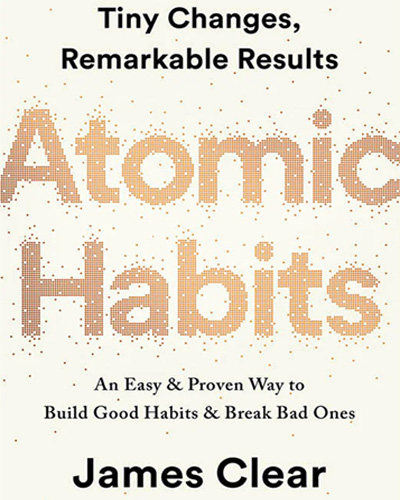
| Language | From $0.00 |
| Release Date | October 18, 2018 |
| Genre | Nonfiction |
| Author | James Clear |
| File Size | Avery |
| Rating | (4.38) |
The core message of the book: Atomic Habits is based on the premise that small, incremental changes can lead to remarkable results over time. James Clear emphasizes that focusing on the process and the systems that drive our habits is more important than setting ambitious goals. By understanding the mechanics of habit formation, we can create lasting improvements in our lives.
Importance of habits in our daily life: Habits are the automatic behaviors that shape our daily experiences and, ultimately, our identity. Clear argues that by changing our habits, we can transform our lives and achieve lasting success.
The power of small habits: Clear advocates for the “aggregation of marginal gains,” which means focusing on making small, 1% improvements in various aspects of our lives. Over time, these tiny improvements compound and lead to significant progress.
The Four Laws of Behavior Change: Clear presents a simple framework for understanding how habits work and how to create new ones. The Four Laws are: Cue (the trigger for the habit), Craving (the desire to perform the habit), Response (the actual habit itself), and Reward (the satisfaction gained from completing the habit). By addressing each of these components, we can create new habits or modify existing ones.
Habit Stacking: This technique involves pairing a new habit with an existing one, making it easier to adopt the new behavior. For example, if you want to start meditating, you could stack it with your morning coffee routine.
Environment Design: Clear emphasizes the importance of designing our environment to support our desired habits. By removing distractions and making good habits more accessible, we can make it easier to adopt and maintain them.
Personal success stories: Throughout the book, Clear shares stories of individuals who have used the principles of Atomic Habits to transform their lives, from improving their health to building successful businesses.
Business and organizational applications: Atomic Habits can be applied to various aspects of professional life, such as improving productivity, fostering teamwork, and enhancing leadership skills.
Tips for overcoming common obstacles: Clear provides practical advice for overcoming obstacles that can derail habit formation, such as lack of motivation, inconsistent routines, and negative self-talk.
Overemphasis on individual responsibility: Some critics argue that Atomic Habits places too much emphasis on personal responsibility and may not adequately address the systemic and structural factors that can influence our habits.
Potential for rigidity and inflexibility: Another criticism is that the book’s approach may lead to an overly rigid and inflexible mindset, making it difficult to adapt to changing circumstances or to make exceptions when necessary.
Atomic Habits offers a compelling and practical framework for understanding and changing our habits. By focusing on small, incremental improvements and leveraging the power of the Four Laws of Behavior Change, James Clear’s approach can help individuals transform their lives and achieve lasting success. While some criticisms and limitations should be considered, Atomic Habits remains a valuable resource for those seeking to improve their personal and professional lives.